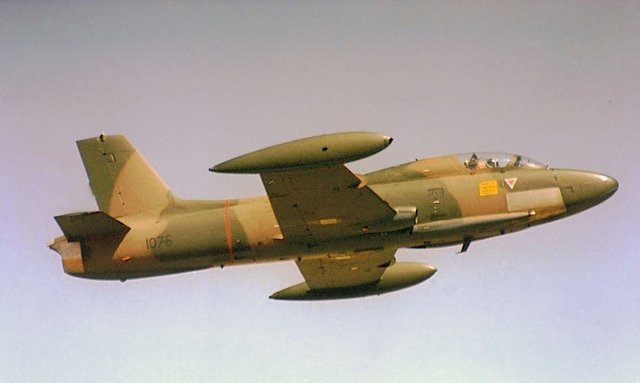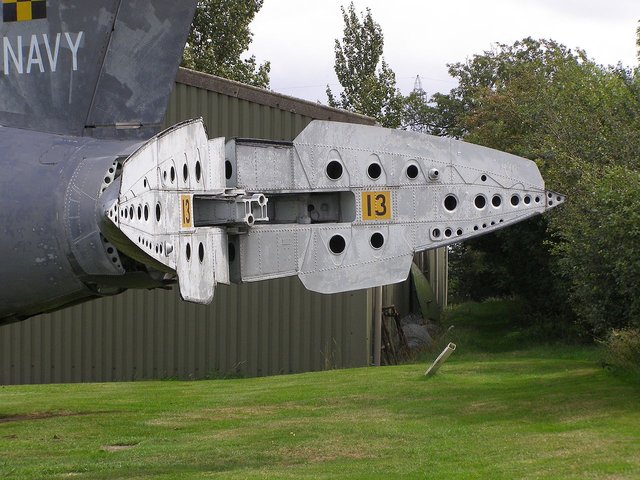The piece of the cold war nobody told you about - Africa's forgotten war - the SA Bomber Aircraft.
Of all the aircraft that operated during the border war the Impala Mk II is by far my favorite, most probably simply due to familiarity.
These were often seen flying at high speed and very low altitude and pretty much in the manner as depicted in the Photo graph below.
Where I grew up was on their training route and so it was not uncommon to hear and see these jets skimming the treetops at high speed making a lot of noise and rattling the windows a couple of times a week.
Both the single-seater combat configuration...

...and the silver 2 seater trainers would be seen regularly.

The South African Defence Force employed Impalas during campaigns against the People's Armed Forces for the Liberation of Angola (FAPLA) and Cuban expeditionary troops in Angola between 1975 and 1989. Impala pilots typically flew at 550–650 km/h at a height of 15 m to avoid Angolan air defences. Over the course of the South African Border War, one was downed by an SA-7; another returned with an unexploded missile in its exhaust.
The aircraft had many advantages over expensive supersonic jets. Although slower, it could operate from relatively primitive airfields and strike swiftly. The South African Air Force (SAAF) used up to 6 x 120 kg or 4 x 250 kg bombs. The main armament consisted of 68 mm SNEB rocket-launchers (four x 6 or two x 18), and two 30 mm autocannon (with 300 rounds).
Impala Mk IIs were also opportunistically used as interceptors. In several encounters in 1985 with Mi-8 and Mi-24 helicopters, they shot down a total of six. This happened during a crucial phase of the ground war, when Angolan and Cuban troops were checked in an offensive against UNITA bases. This ended in disaster for the Angolan/Cuban alliance when their supplies were cut off by UNITA and the SAAF and front line troops ran out of ammunition. Helicopters were being used to supply the besieged troops and the SAAF cut off this link. Two Mi-24s were shot down in the first encounter while escorting Mi-17s. The MiG-21s that escorted them flew too high to react in time. Two days later the Impala Mk IIs struck again, downing two Mi-24s and two Mi-17s. Attacks on unsuspecting helicopters were carried out with only two guns per aircraft.
The single seat Impala Mk IIs were also sometimes armed with Matra R550 Magic air-to-air missiles for self-defence. The Impala Mk II operated at extreme ranges and had to fly very low, climbing only when helicopters were seen at medium altitude. After each attack they returned to low level to avoid interception by enemy MiGs.
source
Another awesome site to behold at low altitude was the Blackburn Buccaneer otherwise known as the Hawker Siddeley Buccaneer.
These were used in many roles including bombing raids and lazer guided tank busting. Pictured below is a variety of the armaments it could carry despite its hulking body and manually fold up wings.


SAAF Buccaneers saw active service in the 1970s and 1980s during the South Africa Border War, frequently flying over Angola and Namibia, launching attacks upon SWAPO guerilla camps. During a ground offensive, Buccaneers would often fly close air support (CAS) missions armed with anti-personnel rockets, as well as performing bombardment operations.
Buccaneers played a major role in the Battle of Cassinga in 1978, being employed in repeated strikes upon armoured vehicles, including enemy tanks, and to cover the withdrawal of friendly ground forces from the combat zone. The Buccaneer was capable of carrying heavy load outs over a long range, and could remain in theatre for longer than other aircraft, making it attractive for the CAS role
A peculiarity of the aircraft that made it easily recognizable in profile was its fold up air brakes which project past the tail when closed.
With this airbrake and fold up wings this aircraft was uitable for operation on carrier
By MilborneOne, CC BY 2.5, Link
The fuselage of the Buccaneer was designed using the area rule technique, which had the effect of reducing aerodynamic drag while travelling at high subsonic and transonic speeds, and gave rise to the characteristic curvy 'Coke bottle' shape of the fuselage. The majority of the airframe and fuselage was machined from solid casting; to give great strength to endure the stress of low level operations.
A large air brake was built into the tail cone of the aircraft. The hydraulically operated air brake formed two leaves that could be opened into the airstream to quickly decelerate the aircraft. The style of air brake chosen by Blackburn was highly effective in the dive-attack profile that the Buccaneer was intended to perform, as well as effectively balancing out induced drag from operating the BLC system. It featured a variable incidence tailplane that could be trimmed to suit the particular requirements of low-speed handling, or high-speed flight; the tailplane had to be high mounted due to the positioning and functionality of the Buccaneer's air brake.


@gavvet
You have good knowledge of the SAAF...love your narratives... But from today's sophisticated fighter jets these seems outdated but can still cause heavy damage to enemy targets. Flying is interesting but flying such needs caurage and training...If I may ask what's the present conditions of all these...are they still in the SAAF fleets? Nice info. Keep it up ...upvoted & following for many more...
these were retired in the early 90's
oops, hit that comment a bit to hard... guess its your lucky day then...
a lucky day indeed..thanks @gavvet...
so when can we get to read about the new and updated SAAF's fleets... As an african ...such infos makes me proud...thanks once more for sharing
the SAAF is now just a shadow of its former self.
i see..anyways...thanks sharing this info mate..keep it up!
Hi, I am new to this group. Just a curiosity. We bought the Buccaneers from Hawker Sideley, which only some time after the transaction amalgamated with, or were bought out by Blackburn. I saw them only very often where I grew up in the Cape. The Imps from Langebaan were even more scarce in those days. The SAAF birds I learnt to love were the Shackleton as it returned to DF Malan airport after their sorties over the sea. And then the Harvards from Youngsfield that added to the rock and roll noises of the day. Loved it.
I thoroughly enjoyed this post. Well written, learned something new. Thank you!
Yes master @johnsmith it is a very good post.
I hate wars.. and I don't like war airplanes.
You make me think about the F117 shooted in the ex Jugoslavia I think was in the 1999.
Before above... below after....
Following you buddy. Impalas and Mirage III's, those were good times. Who Dares Wins.
Always loved the design of old military aircraft, especially those with unique designs.
Wow....never saw a fighter plane from so close. Thanks for sharing.
these aircraft fighter are 3 generation most of them have speed of .5 Mach to . 1.25 Mach and they have solid body . this post is informative would like to see some more like it.
Now this my friend is history that wasn't taught in my school
Fantastic shots the aircrafts, cheers.
THis is actually interesting
I think so aswell